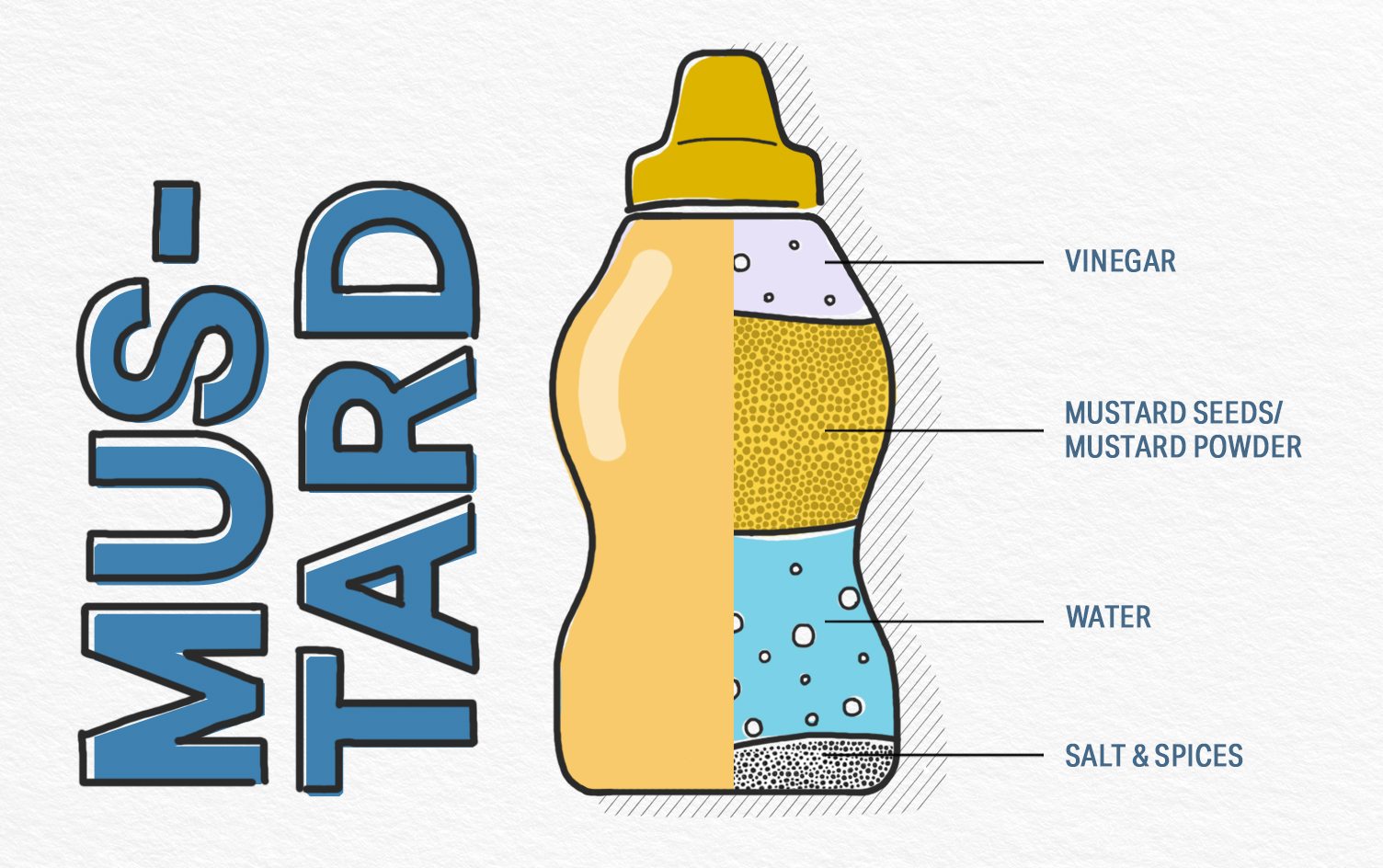Summer means a cadre of condiments waiting at the end of the hamburger and hot dog line. This array of colorful containers can be confusing with their long lists of ingredients. We’ve broken down some of the most popular summer condiments to help you out before you top off your next burger:

A crowd favorite, ketchup often receives some of the biggest criticisms of any condiment because sugar (specifically high-fructose corn syrup and corn syrup) are frequently listed as the second or third ingredient on the label. These ingredients, along with tomato concentrate and distilled vinegar, pack a 20-calorie per tablespoon punch with 4 grams of sugar. The bottom line? Conserve and use sparingly — consider low-sugar or “natural” options made without high-fructose corn syrup, or make your own ketchup at home.

Classic yellow mustard gets the green light, unless you’re watching your sodium intake. The ingredients here are a little more straightforward: vinegar, water, mustard seed, salt, turmeric, paprika, natural flavors and garlic. Each 1 teaspoon serving of classic yellow mustard has about 55 milligrams of sodium, or about 2% of your daily value. As long as you aren’t dosing your entire plate with yellow mustard, this condiment is a pretty safe bet.

The creamy, smooth textures of mayo don’t come without a nutritional cost. Just one tablespoon of mayo packs 10 grams of fat and 100 calories. Ingredients include soybean oil, water, whole eggs, egg yolks, vinegar, salt and sugar. In moderation, mayo can be a great addition to a sandwich or wrap, as long as you stay mindful of serving size. Try using hummus or avocado to achieve the same creamy texture for a little less fat and calories per serving.

Made from pickles, cabbage and white vinegar, relish is a crowd favorite on hot dogs and hamburgers. A 1 tablespoon serving of dill relish clocks in around 230 milligrams of sodium, which is about 10 percent of your sodium intake for the day. Use relish in moderation.

A favorite hot sauce and go-to for boosting any meal with a dose of fiery flavor, sriracha clocks in at 5 calories per 1-teaspoon serving, with 80 milligrams of sodium. After chili, sugar and salt are the next ingredients in the little red bottle of Sriracha. The combination of sweet and salty can be too tasty to limit to one teaspoon, and each teaspoon has 1 gram of sugar, so if you’re the spicy type keep in mind the sugars can add up quickly.

A good barbecue sauce is a staple of any summer cookout. Two tablespoons of the stuff can range from 10–20 grams of sugar and a carry a hefty load of sodium. All this added sugar comes from the sauce’s main ingredients: high-fructose corn syrup, corn syrup and molasses. This makes barbecue sauce even higher in added sugar than ketchup. Consider making your own homemade barbecue sauce to control the overall sugar content.

Chunky salsa made with real crushed tomatoes, jalapeno peppers, onions, garlic and other flavorings comes in at only 10 calories per 2 tablespoon serving. It’s a low-calorie condiment, but still contains 10 percent of your daily sodium in one serving, so be mindful of quantity. Not all salsa is created equal as many recipes have sugar lurking in the list of ingredients, so be sure to read the label. You can quickly craft your own homemade salsa using fresh ingredients to keep a lid on the sodium content.




